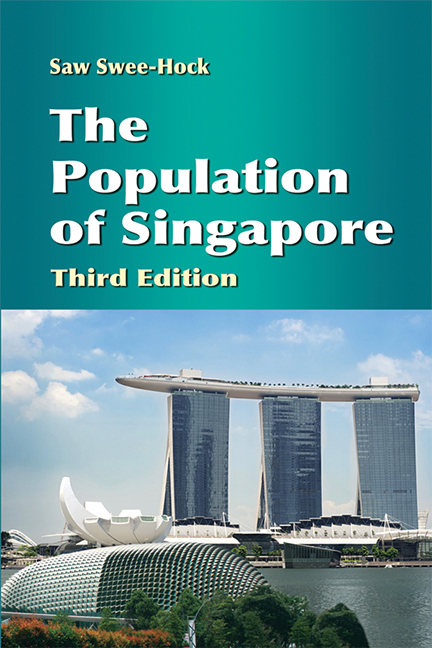Book contents
- Frontmatter
- Contents
- List of Tables
- List of Figures
- Preface
- Preface to Second Edition
- Preface to Third Edition
- 1 Background
- 2 Population Growth and Distribution
- 3 Changing Population Structure
- 4 Migration
- 5 Mortality Trends and Differentials
- 6 Marriage Trends and Patterns
- 7 Divorce Trends and Patterns
- 8 Fertility Trends and Differentials
- 9 Family Planning, Abortion and Sterilisation
- 10 Fertility Policies and Programmes
- 11 Immigration Policies and Programmes
- 12 Labour Force
- 13 Future Population Trends
- Appendix
- Bibliography
- Index
Preface to Second Edition
Published online by Cambridge University Press: 21 October 2015
- Frontmatter
- Contents
- List of Tables
- List of Figures
- Preface
- Preface to Second Edition
- Preface to Third Edition
- 1 Background
- 2 Population Growth and Distribution
- 3 Changing Population Structure
- 4 Migration
- 5 Mortality Trends and Differentials
- 6 Marriage Trends and Patterns
- 7 Divorce Trends and Patterns
- 8 Fertility Trends and Differentials
- 9 Family Planning, Abortion and Sterilisation
- 10 Fertility Policies and Programmes
- 11 Immigration Policies and Programmes
- 12 Labour Force
- 13 Future Population Trends
- Appendix
- Bibliography
- Index
Summary
The original edition of this book on The Population of Singapore presents an analysis of population trends and patterns in Singapore in eleven chapters covering the period from its foundation in the early nineteenth century to around the year 1997. In designing the second edition, I have expanded the book by increasing the number of chapters to thirteen and by including data, particularly those from the 2000 Population Census and the 2005 General Household Survey, that have been made available up to 2005, or even 2006 in some instances. The old chapter on Population Control has been split into two, one entitled Family Planning, Abortion and Sterilisation and the other Fertility Policies and Programmes. A new chapter on the very current topic, Immigration Policies and Programmes, has been added. The last chapter on Future Population Trends incorporates the results of my latest projection of the resident population and, for the first time, the resident labour force. As for the other chapters, they have been updated by including materials that have been made available up to the year 2006 or so. Overall, the changes have resulted in a book that is clearly more current and comprehensive.
In preparing the second edition of the book, I have benefited from the valuable assistance of many organisations and individuals. My thanks go to the numerous government organisations for supplying me with the necessary materials and statistics. My research has been greatly facilitated by the assistance and conducive facilities offered at the London School of Economics Library, the National University Library, and the Institute of Southeast Asian Studies. I wish to thank Ambassador K Kesavapany, Director of ISEAS, for his generous hospitality and Mrs Triena Ong, Managing Editor of ISEAS Publications Unit, for bringing out this edition expeditiously. I wish to reiterate that any opinions and shortcomings are entirely my own.
- Type
- Chapter
- Information
- The Population of Singapore , pp. xviii - xixPublisher: ISEAS–Yusof Ishak InstitutePrint publication year: 2012



